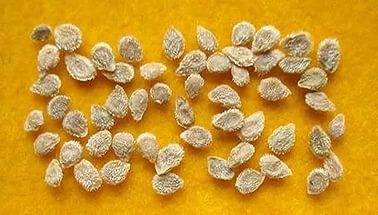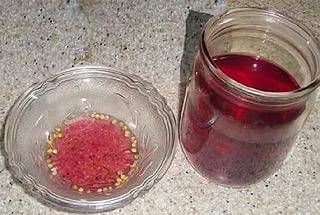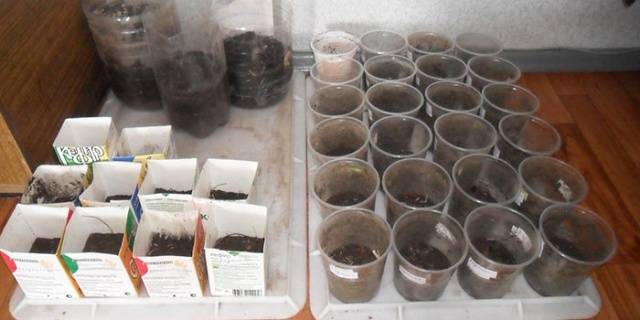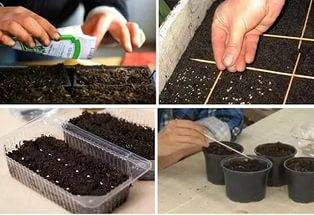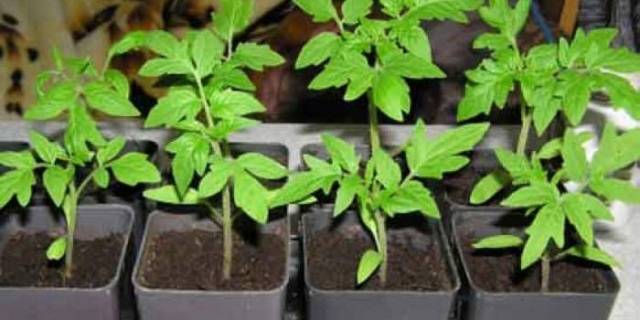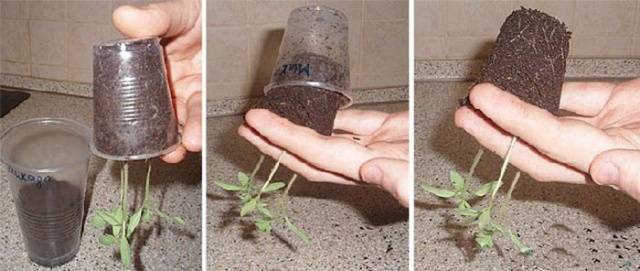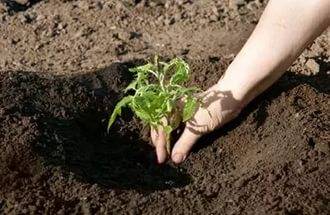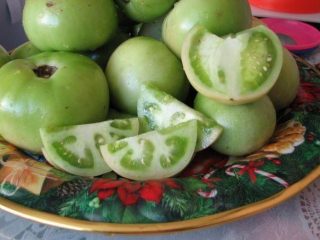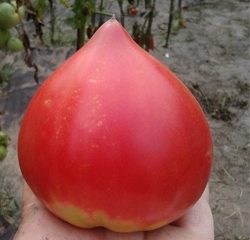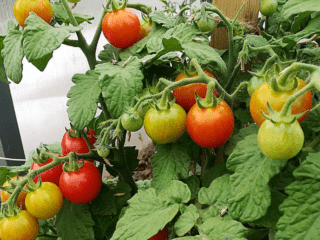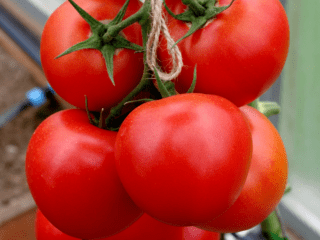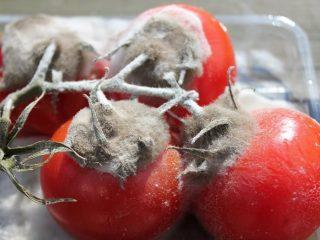Content
- 1 Growing tomato seedlings according to the lunar calendar
- 2 Choosing tomato seeds for seedlings
- 3 Preparing tomato grains for sowing
- 4 Preparing soil and containers for planting
- 5 Sowing tomato seeds in the ground
- 6 Feeding tomato seedlings
- 7 Picking seedlings
- 8 Planting seedlings in a permanent place of growth
Gardeners' worries begin in February. The last month of winter is important for those who grow seedlings. It’s still frosty and snowing outside, but sowing work is in full swing inside the house. For tomato seedlings to succeed, the vegetable grower needs to prepare seeds, soil, containers for planting, and do many other important things.
Growing tomato seedlings according to the lunar calendar
The question of when to sow tomatoes for seedlings begins to worry every housewife after the end of the New Year holidays. The fact is that sowing dates are different for different regions due to the characteristics of the local climate. However, we can say with confidence that preparing tomatoes for seedlings in 2024 should begin in February. This winter month is very cold, but the daylight hours are getting longer, and the last weeks are optimal for tomato seedlings.
If earlier our ancestors were engaged in farming, adhering to folk traditions, then many modern gardeners trust the lunar calendar more. According to an important forecast compiled by astrologers, housewives determine the date for sowing seeds for tomato seedlings in 2024.
Favorable and unfavorable days for sowing tomatoes in 2024:
It is important to know not only when to plant tomatoes for seedlings, but also a favorable date for their picking. Here the 2024 lunar calendar will come to the rescue again. Successful days for picking fall on the waning moon.
Video about the secrets of growing seedlings:
Choosing tomato seeds for seedlings
Experienced vegetable growers select seed material based on their experience last year in growing certain varieties of tomatoes. If growing tomato seedlings is a new business, then first of all preference is given to varieties and hybrids adapted to local climatic conditions. This information is usually displayed on the back of the seed package.
A beginner can grow a good harvest of tomatoes at home by planting crops that require less care. Here it is also important to pay attention to the purpose and size of the fruit, the color of the pulp, and the height of the plant. Indeterminate tomatoes are better suited for greenhouse cultivation. It is better to plant determinate or semi-determinate tomatoes in the garden.
The percentage and time of germination of tomato grains depends on the period, as well as the conditions of their storage. The date of production of the seeds can be found on the packaging, but no one knows how they were stored. Because of this, many vegetable growers like to collect their own homemade seeds. They are larger, grow better, and are also free.
Preparing tomato grains for sowing
In order for the seeds to have a high percentage of germination and the tomato seedlings to be healthy, the grains must be carefully prepared for sowing:
- Helps ensure a high percentage of germination sorting seeds You can hand-select empty and broken beans, but it is easier to dip them in a jar of warm water. All floating pacifiers are thrown away, and the seeds that have settled to the bottom of the jar are filtered through cheesecloth. So they will go to sowing.
- Etching tomato seeds is an important process of destroying infection on the surface of the grain. A variety of solutions are used, but the easiest way is to place the grains inside a gauze bag and dip them in a steep solution of potassium permanganate for half an hour.
- The following preparation process involves soak seeds For these purposes, it is better to stock up on melt or rain water in advance. First, the grains are immersed for 30 minutes in a jar of water at a temperature of 60OC to awaken the fetus. Then take water at a temperature of 25OC, and ordinary cotton wool or natural linen with grains inside is immersed in it for a day.
- After soaking, the grains are dried a little, laid out in one layer on a saucer and refrigerated for 48 hours. hardening.
The last stage of preparation involves germination. Tomato seeds are laid out on a plate between two layers of gauze, lightly moistened with water and placed in a warm place. Before the embryo pecks, you need to make sure that the tissue is damp, but not floating in water.
Some vegetable growers have a negative attitude towards the preparation process and sow tomato seeds in the ground dry right from the packet. This is a personal matter, everyone has their own secrets of growing tomatoes.
Preparing soil and containers for planting
It is optimal to plant tomatoes in purchased soil. It is already saturated with all the necessary microelements. Homemade soil can be prepared from a mixture of garden soil with peat and humus. For looseness, you can add sawdust. In this case, the homemade soil will have to be fed with wood ash, potassium sulfate, urea and superphosphate.
You can plant tomatoes for seedlings in common containers or individual cups. In any case, the container is disinfected with a steep solution of potassium permanganate. The inner walls that will come into contact with the roots of the tomato need to be treated especially well. If tomato seeds are planted for seedlings in separate cups, you still need to prepare boxes for them. So, it will be more convenient to transport the seedlings and care for them.
It is important to think about the place where the containers with tomato seedlings will be placed. Even for sprouts that have not sprouted from the soil, at least 16 hours of daylight is required. You may have to take care of organizing artificial lighting. The temperature in the room with seedlings should not be lower than 20OWITH.
Sowing tomato seeds in the ground
Planting tomatoes for seedlings begins by filling prepared containers with soil. The soil is slightly compacted, moistened, and then loosened. If sowing in common containers is planned, then grooves 1.5 cm deep are cut along the surface of the soil with a row spacing of 4 cm. Tomato grains are laid out at a distance of 2–3 cm from each other, after which they are sprinkled with soil.In cups, the procedure for sowing seeds is similar, only instead of grooves, 3 holes of the same depth are made. Of the three sprouted sprouts, the strongest one is subsequently left, and the remaining two are removed.
After sowing all the seeds, the soil on top is lightly moistened with water from a spray bottle. Cover the top of the container with glass or film, place it in a warm place, and wait for the sown tomatoes to sprout. Remove the cover after all shoots have appeared. Here it is important to maintain the same warm temperature in the room with the seedlings for at least 4 days, otherwise the sprouts will slow down their growth.
Feeding tomato seedlings
Seedlings require nutrients to grow well. The first feeding is carried out after the appearance of two full-fledged leaves. In total, before picking, you need to do 3 feedings, the last of which is done 2 days before transplanting the plant into another container. Mineral fertilizers sold in specialized stores are used as nutrients.
For experienced vegetable growers, growing tomato seedlings is a whole science. They do not rush to apply fertilizers on schedule, but monitor the condition of the plants. When tomato seedlings show off powerful stems with brightly saturated dark green foliage, they are not fed. When yellowness appears and the lower leaves fall from the stem, the plants are fed with nitrogen fertilizer.
The purple color of the seedlings indicates the need to apply phosphorus-containing fertilizers. The condition of the seedlings depends on where they are located. You cannot keep tomato seedlings in a room with artificial lighting constantly on. Plants love day/night balance.In case of excessive illumination, seedlings are fed with preparations containing iron.
Picking seedlings
Tomato plants with three full leaves are allowed for picking. This usually happens 10–15 days after germination. There are many opinions regarding the usefulness and harm of picking, but it must be performed in the following cases:
- when transplanting plants from a common container into cups;
- if desired, choose seedlings with a healthy root system;
- if necessary, stop the growth of tomato seedlings;
- when removing diseased plants.
Two days before picking, the seedlings are watered, plus the last fertilizing is applied at the same time. Using a special spatula or a regular spoon, dig up each tomato plant and, together with a lump of earth, place it in another container. All voids around the roots are filled with soil so that its upper level is equal to the location of the cotyledon leaves on the stem. The soil inside the container is lightly compacted and then watered abundantly.
Planting seedlings in a permanent place of growth
Tomato seedlings are planted in a permanent place of growth when they reach the age of 40-60 days. During this time, the plant should grow from 7 to 9 full leaves, and the stem height will reach 20 cm. Planting in open ground begins when the night temperature is not lower than +12OWITH.
A week before the start of planting tomato seedlings, the soil in the garden bed is disinfected with copper sulfate. The solution is prepared from 1 liter of water with the addition of 1 tbsp. l. dry powder. This volume of liquid is enough to treat 1 m2 beds. At the same time, organic and mineral fertilizers are applied.
Under each plant in the garden, dig holes about 30 cm deep and water them abundantly. The tomato seedling is carefully removed from the cup, after which, together with a lump of earth, it is placed in a hole and covered with loose soil. The soil around the plant needs to be compacted a little, then watered with 1 liter of warm water. The next watering of the planted seedlings is carried out after 8 days or as they dry out.
Video on how to grow tomato seedlings:
Now you know how plant tomato seedlings at home, and the lunar calendar will help determine the timing.

